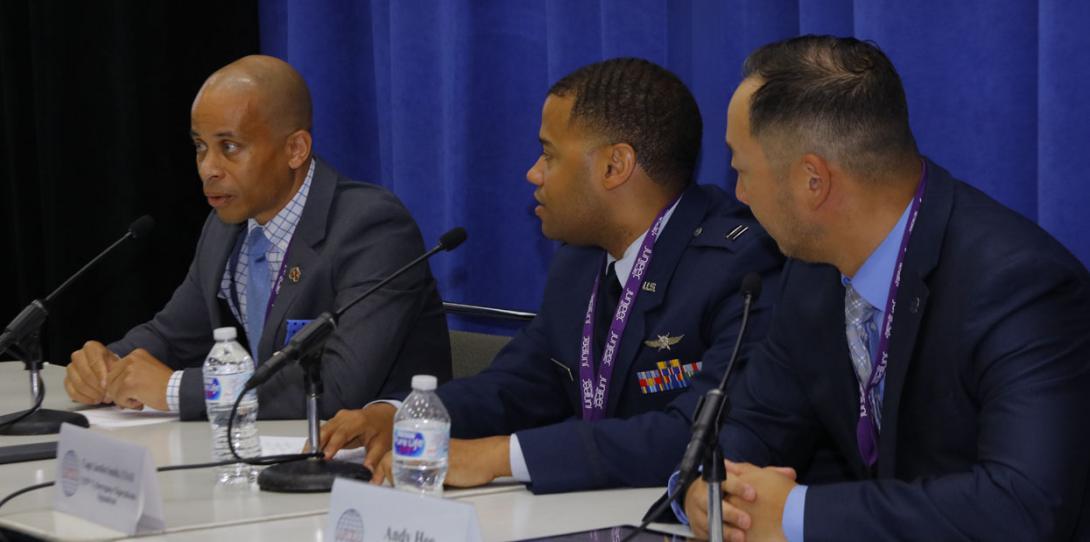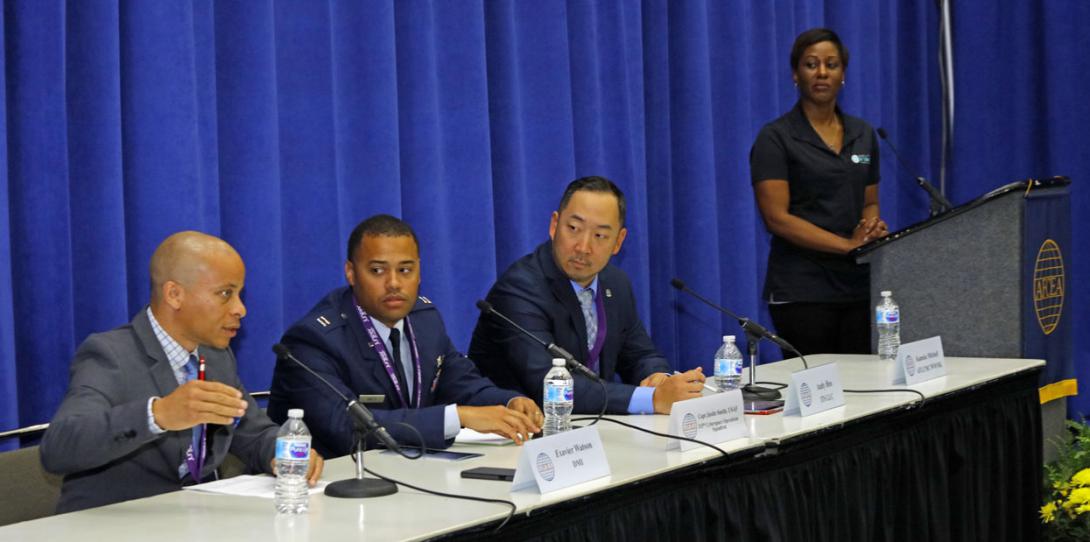Refining STEM Education to Raise the Bar for Cyber
Raising the bar for STEM education comes through practice, competition and a culture shift to help prepare the next generation of defense leaders. It’s less about how many hours of STEM courses or what is the right age to engage kids in STEM and more of a focus on how to create access to opportunities in a way that they can connect with for the long term.
“As soon as they start using the technology, they should be introduced to cyber concepts—phishing, malware,” said Capt. Justin Smith, USAF, cyber warfare planner, 315th Cyberspace Operations Squadron. “That can be done at a low level and that will embed in their minds that these are things they need to be cognizant of. It can be a little dry when teaching networking fundamentals, operating systems security foundations, so what we try to do is mix that up. Teach a little, but give them a virtualized environment they can operate on while doing the lesson so they’re getting hands-on experience.”
The Young AFCEANs panel discussing early STEM education at the Defensive Cyber Operations Symposium in Baltimore explained some of the techniques that are likely to work best to getting school-agers to be interested in technology beyond social media. Through gamification and hands-on keyboards, STEM can be fun for kids. They can understand and relate to it. As they develop science, technology, engineering and math skillsets early on, competitions in middle and high school reinforce interest. Challenging kids with real life scenarios designed as a type of honeypot will breed creativity, they agreed.
Panelist Dr. Andrew Heo, chief cybersecurity engineer, ITS LLC, said it’s important to cultivate a shift in culture from a zero-error mentality toward a culture of learning lessons from mistakes. “That kills innovation at any level, when you start telling people that they can’t make mistakes, especially in this domain that’s highly technical and we need to have very astute minds who have to learn how to do things on the fly—adapt and think. It’s not just a checklist anymore,” he explained. Today, adversaries continuously make mistakes. It doesn’t bother them because they learn from those mistakes and move forward, Heo said.
The panelists stressed the importance of understanding different perspectives. Helping students identify their own strengths and weaknesses will help them work together. Teaching a holistic mindset is just as important as technical skills as they grow up.
As Capt. Smith explained, “Cyber is a team sport. It’s all interconnected. As long as kids understand that—tell them you don’t have to figure this out all on your own—you have teammates, work together and use each other’s resources.”
This rings true in the classroom just as much as in the broader landscape where security technologies and strategies depend on private-public sector collaboration. From an industry standpoint, Exavier Watson, senior solutions architect and capture manager, DMI, pointed out the key to success: “Don’t just rely on the people that work within your organization or particular company or government agency. Everybody brings a different perspective to solving different problems. Hacks are always going to happen, so stay ahead of that by allowing the synergy of information to come from multiple organizations external to yours.”
The government and military need this cross-agency and joint service collaboration as they inadvertently limit students from succeeding or even pursuing STEM fields because the system is designed with roadblocks. “We tell them there are lucrative careers for you in cyberspace. So they finish the education, they finish certifications, then they go try to get into a job and what do we do? We say you don’t have experience. You don’t have a clearance. So they’re going to go to industry to do something else,” Heo said. “We have to change the modality of how we do things.”
As a basketball fan, Heo likened it to when the Cleveland Cavaliers drafted LeBron James as a rookie out of high school. “They didn’t not play LeBron James on day one because he didn’t have enough experience.” He advocates for giving young professionals opportunity to use their talent.
Fostering a STEM skillset and psychology in students comes down to listening to them then attaching a tangible mission to the work. Watson encouraged finding ways to volunteer. Investing time and developing kids to find success as cyber warriors is ultimately a way to give back to the community. It’s essential, Watson said, to connect with youth in order to gain trust. “That’s the only way they’re going to get something out of what you’re trying to teach them,” he stated.









Comment
cyber with quantum internet computing
Its a great step and very encouraging way.We need to introduce quantum computing and its applications for intelligence and cyber activites too.
Comments